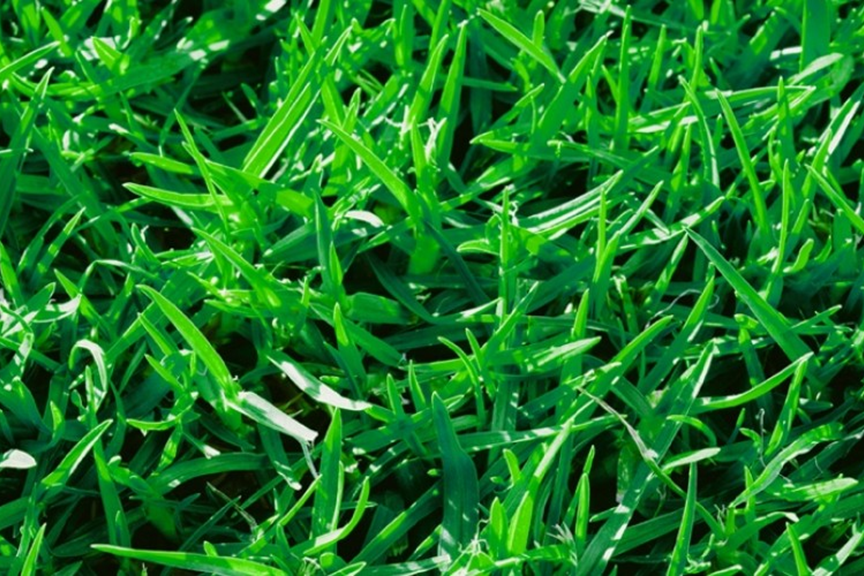Frequently Asked Questions - Lawn Care


Improved Air Quality: A 15m x 15m well-maintained grass area will create enough oxygen to meet the needs of a family of 4 every day. Acting like a gigantic sponge, lawns absorb all types of airborne pollutions such as soot, dust and carbon dioxide.
Electricity Saving in Summer: The front lawns of a block of eight houses have the cooling effect of about 70 tons of air-conditioning enough to cool 16 average homes. On a hot summer's day grass can be 10-14 degrees cooler than exposed soil and as much as 30 degrees cooler than concrete or asphalt.
Water Quality: Studies show healthy lawns absorb rainfall 4-6 times more effectively than pastures, being exceeded only by virgin forest. Lawn returns the moisture to the water table, where it can again be used by everyone.
Reduction Glare: Lawns help to soften and reduce reflected light, lessening glare.
Health: Lawn maintenance requirements provide an excellent opportunity to enjoy reasonable exercise while enjoying fresh air.
Noise Reduction: Good turf can absorb sound better than heavy carpeting.
Do not panic! Germination with any seed may take slightly longer to come through depending on a number of reasons. The most common problem can be the ground is constantly varying in temperature and the seeds need the warmth to germinate. So, when your weather is cold and miserable, the ground temperature will drop and therefore slow the process.
Lawn burn is caused by the nitrogen in dog urine, because dog urine is very high in nitrogen. Munns recommend using Munns Professional Quick Fix Lawn Seed. The lawn seed is coated in an advanced germination booster coating, to assist with germination in 5-7 days (may be slower in cold areas and when the soil is not kept sufficiently moist).
You can purchase Munns products from all good garden and hardware centres. Use Store Locations, where you can enter your suburb or postcode to find your nearest stockist. Please call the store prior to check product availability. Please note, not all products of the Munns range are stocked at each store. For clarification, please contact your nearest store or Contact Us.
You can generally tell when your lawn needs a feed, it will discolour to a yellow or pale green. We recommend to fertilise once a season with Munns Professional Buffalo Booster Lawn Fertiliser or Munns Professional Golf Course Green Fertiliser to keep your lawn healthy and green. For a quick green up, use Munns Professional Green Dominator Lawn Fertiliser.
This could possibly be that your mower blades are dull and shredding the leaf tips. These will turn white or brown as the shredded tips die off.
This depends on which variety has been planted. See below for estimated germination times:
- Rye grass: approx. 3-5 days
- Tall fescue: approx. 7-14 days
- Couch & Kikuyu varieties: approx. 10-21 days
Ground temperatures play a big part in overall germination time. The warmer the weather the quicker the germination. Cold weather slows down growth.
Sow these varieties when ground temperatures are consistently 23℃ or more. Months between October until February are appropriate for cooler climates. For warmer climates, like Far North Queensland, and Northern Territory, these varieties could be sown 12 months of the year.
When seedlings are approximately 5-6 cm high, remove about 1 centimetre. Regular and early mowing will strengthen and thicken the lawn.
Rotary hoeing coarse sand and gypsum into the clay will improve drainage and allow for better root development of the lawn. The deeper the roots can penetrate, the longer the lawn will go without water.
Autumn and Spring. These varieties can be sown 12 months of the year, germination is obviously slower in cooler weather.
Munns Professional Lawn Seeds boxes have a built-in spreader, allowing you to evenly broadcast the contents of the pack over the area. For the regular Munns range, we recommend mixing with Munns Superstart Seed & Turf Starter Fertiliser.
Munns Professional Pure Kikuyu, Munns Professional Couch Lawn Seed, buffalo, and other couch and kikuyu varieties.